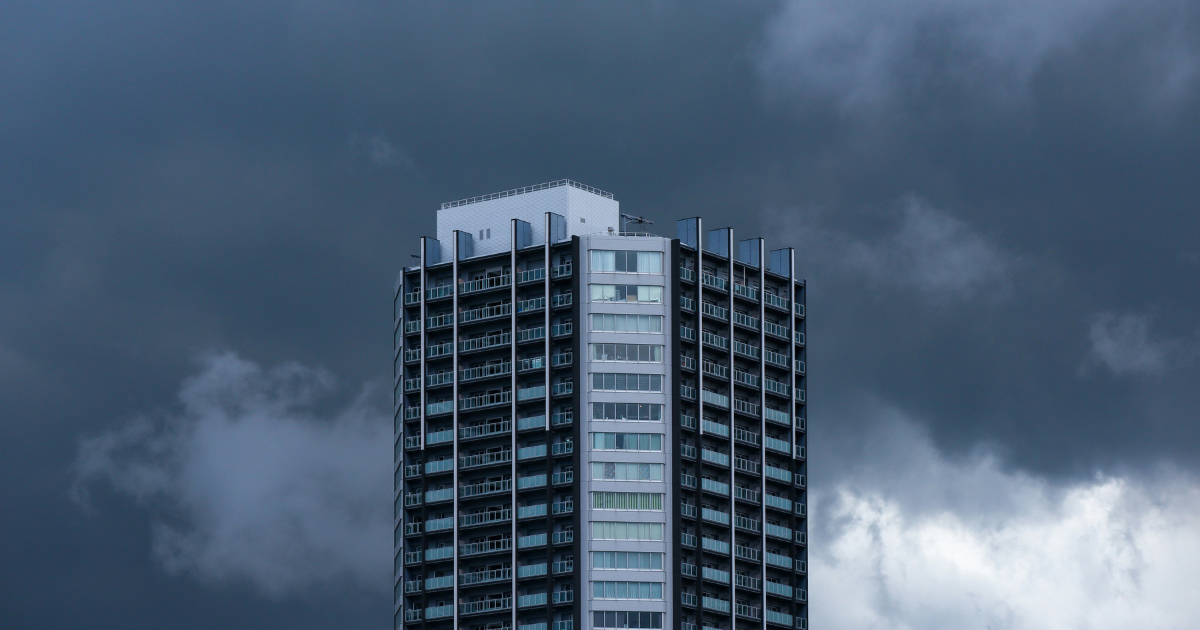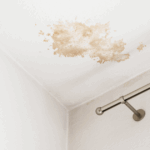
After severe weather strikes, whether it’s high winds, hail, or heavy rain, the integrity of your building becomes a critical business concern. This is when proper roof damage inspections can mean the difference between minor repairs and catastrophic structural failures that interrupt operations and damage valuable assets.
What might seem like a minor issue at the time, can turn into costly repairs if left unchecked. Beyond structural evaluation, a thorough assessment can do so much for your business: from preventing leaks and water damage to extending the life of your roofing system and avoiding long-term issues.
This comprehensive guide will walk you through everything commercial property owners and facility managers need to know about post-storm roof assessments, from identifying hidden damage to working with insurance providers and securing professional repairs.
Why Immediate Response Matters for Your Business
When storms hit your commercial property, visible damage is just the beginning. The real threats often lurk beneath the surface, silently compromising your building’s structural integrity and potentially leading to thousands in avoidable repair costs. Commercial roof damage presents unique challenges that residential properties don’t face, such as:
- Larger Surface Areas: Commercial roofs typically cover more extensive areas, creating more opportunities for damage points
- Complex Systems: HVAC units, exhaust systems, and other rooftop equipment create additional vulnerabilities
- Business Continuity Risks: Water intrusion can damage inventory, equipment, and disrupt daily operations
- Higher Repair Costs: Specialized commercial roofing systems require expert assessment and repair
Addressing roof damage promptly reduces repair costs and immediate action prevents secondary damage from developing and spreading throughout your building.
“The most expensive roof repairs we see are almost always the result of undetected damage that worsened over time. A small puncture from hail or debris can create major structural issues months later if left unaddressed.” – Rck Dodaj, Founder of Silicoat Roofing.
Step-by-Step Guide to Inspecting Roofs After Storms
Professional roof assessments follow a systematic methodology that ensures no damage goes undetected. Here’s how expert inspectors approach your commercial property:
Phase 1: Preliminary Assessment and Documentation
Before any detailed inspection begins, professional roof inspectors will conduct several important preliminary steps. They review building history by examining previous repair records, warranties, and installation dates to understand the roof’s background. They also document pre-existing conditions to establish baseline conditions that help distinguish new storm damage from older issues. Inspectors capture initial evidence by taking photographs from multiple angles to document visible damage for insurance and assessment purposes. Finally, they secure the property by addressing any immediate safety concerns or implementing temporary protection measures where needed.
This preparation phase creates crucial documentation for insurance claims while establishing the scope of the inspection. This reinforces why professional inspections matter for commercial properties where roof access is often limited or hazardous.
Phase 2: Comprehensive External Roof Examination
The external inspection focuses on the roof’s surface and attached components, including:
Roofing Materials Assessment
Professional inspectors thoroughly examine for punctures, tears, or displacement in membrane roofing. They look for missing, cracked, or damaged shingles or tiles on traditional roofing systems. For commercial metal roofs, they assess dents, scratches, or perforations that might compromise the surface, while checking for granule loss in asphalt-based systems that could indicate deterioration.
Structural Component Inspection
Experts pay careful attention to flashing around penetrations, edges, and transitions where water typically enters. They evaluate sealant integrity at terminations and joints, test gutter and downspout functionality to ensure proper drainage, and verify roof-mounted equipment stability to prevent future damage points.
Advanced Diagnostic Techniques
Modern inspection methods include drone photography for safely examining inaccessible areas, water damage detection using infrared technology to find hidden problems, and core sampling when necessary to assess subsurface conditions that might not be visible from the surface.
Phase 3: Interior Investigation
A complete roof damage inspection doesn’t stop at the exterior. Thorough assessments also examine interior elements for evidence of moisture intrusion. Professional inspectors carefully check ceiling surfaces for water stains, discoloration, or sagging that indicate leakage. Attic spaces are examined for moisture intrusion, wet insulation, or wood rot that might not be apparent from below. Structural supports receive particular attention, as they can show beam deflection, connection instability, or fastener deterioration when compromised by water.
These interior signs often confirm suspicions raised during external examinations and help create a complete picture of the damage pathway. One of the most challenging aspects of roof leak diagnosis is that water frequently travels from its entry point before becoming visible inside the building, sometimes appearing quite far from the actual damage. This water migration pattern is why tracing damage to its source requires professional expertise and systematic investigation techniques.
Phase 4: System Functionality Testing
Beyond visual inspection, professional assessments evaluate how well critical roof systems continue to function:
Drainage Assessment
Inspectors examine water flow patterns and evacuation speed across the roof surface. They identify ponding water locations and assess how long water persists in these areas after rainfall. Technicians also check for drain and downspout blockages that could impede proper water removal from the roof.
Ventilation Evaluation
Experts verify exhaust and intake functionality to ensure proper airflow throughout the building envelope. They examine HVAC curb and penetration seals for integrity and water-tightness. The assessment includes ridge and soffit vent performance to confirm adequate ventilation that prevents moisture accumulation.
Thorough drainage testing is essential – standing water significantly increases the risk of membrane deterioration and failure compared to areas with proper water runoff. This stagnant moisture creates ideal conditions for premature degradation of roofing materials
Phase 5: Comprehensive Documentation and Reporting
The final phase transforms inspection findings into actionable intelligence. Professionals create comprehensive damage maps that precisely locate and categorize all identified issues across your roofing system, providing clear visualization of problem areas and their relationships. Thorough photographic evidence includes before, during, and after documentation of all damage, creating a visual record that supports insurance claims and provides baseline documentation for future reference. Issues are classified by urgency and potential consequences, helping you understand which repairs need immediate attention and which can be scheduled as part of ongoing maintenance. The assessment includes detailed cost estimates for necessary repairs and replacements, giving you clear financial expectations for restoring your roof’s integrity.
The resulting report provides an essential tool for insurance claims, repair planning, and long-term maintenance strategies. By the end of a professional inspection, you should have a clear understanding of your roof’s condition and the specific steps needed to restore its integrity and protect your business.

Common Storm Damage Signs and What They Mean
Different weather events create distinct damage patterns that affect commercial roofs in various ways. Understanding these patterns helps business owners recognize potential issues and communicate effectively with roofing professionals.
Wind Damage
Creates progressive damage starting with loosening materials at edges and corners, eventually leading to fastener fatigue and water infiltration. Business impact includes compromised water-shedding capability and potential interior damage.
Hail Impact
Affects different roofing systems uniquely – causing granule loss in built-up roofing, punctures in single-ply membranes, and denting in metal roofing, which ulteimately results in shortened roof lifespan and increased long-term costs.
Water Issues
Heavy rainfall creates ponding areas and tests drainage systems. Standing water adds weight to the roof structure and accelerates material degradation.
Debris Damage
Storm-carried debris causes punctures, abrasions, and deformation. Even small penetrations can allow significant water entry over time.
Here’s a comparison table on common storm damage signs:
Early identification of these damage types is essential for preventing secondary damage and protecting business assets. If you notice any critical damage, take immediate action to prevent further structural deterioration.
Storm Damage Repair: What Comes Next?
When significant damage occurs, time literally is money, and emergency commercial roof repair services become essential. The inspection and repair timeline directly impacts both repair costs and insurance coverage.
0-48 Hours: The Critical Window
The first two days after a storm represent your best opportunity to:
- Document fresh damage before weathering obscures evidence
- Prevent secondary water damage from developing
- Meet insurance reporting requirements
- Secure temporary repairs for the most vulnerable areas
Addressing roof damage promptly after a storm can significantly reduce total repair costs compared to delayed response. Industry experts recommend inspecting and securing damaged areas within the 48-hour window after a weather event to prevent secondary damage from developing and expanding the scope of necessary repairs.
3-7 Days: The Assessment Period
During the first week, professional inspectors should:
- Complete comprehensive assessment of all roof areas
- Identify hidden damage through specialized testing
- Develop detailed repair specifications
- Provide documentation for insurance claims
This thorough assessment period is crucial for identifying less obvious damage that might otherwise go undetected until it causes significant problems.
1-4 Weeks: The Resolution Phase
Within the first month, focus shifts to:
- Finalizing insurance claims and coverage determination
- Scheduling permanent repairs based on priority
- Implementing preventive measures against future damage
- Updating roof maintenance plans to address new vulnerabilities
Delays during this phase often lead to insurance complications—most commercial policies have strict time limits for claim completion.
Long-Term Monitoring: The Prevention Strategy
Even after repairs are complete, storm-damaged roofs require:
- Follow-up inspections at 3, 6, and 12 months
- Documentation of repair performance
- Adjustment of maintenance schedules to address new concerns
- Verification that all damage was properly identified and corrected
Adhering to this timeline maximizes your insurance coverage while minimizing the total impact on your business operations and finances.

FAQ About Roof Damage Inspections After Storms
How soon should I inspect my roof after a storm?
Ideally, within 24-48 hours. Delays can lead to worsening damage and insurance claim issues.
What type of storm damage is hardest to spot?
Hidden leaks, membrane punctures, and hail impact damage often go unnoticed without a professional assessment.
Can my maintenance staff handle minor roof damage?
It’s always best to consult a commercial roofing expert, as DIY repairs can void warranties or lead to bigger issues.
How do I know if damage was caused by recent storm versus normal aging?
Professional inspectors distinguish storm damage from wear by identifying specific patterns.
What documentation should I maintain between storms to support potential future claims?
Maintain records of all maintenance visits, repairs, and previous inspections. Take dated photographs of your roof annually, document any rooftop changes or equipment installations.
Protect Your Commercial Property Today
Storms are unpredictable, but your roof’s durability doesn’t have to be. By scheduling roof damage inspections after severe weather, you can detect hidden issues before they escalate, ensure your insurance claims are accurate, and prevent costly emergency repairs.
Proactive roof management is the key to protecting your commercial property investment and ensuring business continuity through severe weather events. At Silicoat Roofing, we’ve been protecting Detroit’s commercial properties for decades with specialized knowledge of local weather patterns and building codes.
Don’t wait until water is pouring into your building to address roof damage. Contact us today to schedule your comprehensive roof damage inspection.
About the Author
Rick Dodaj is the founder and CEO of Silicoat Roofing, specializing in commercial roofing solutions that protect businesses and their investments. With extensive experience in commercial roofing, Rick leads a team dedicated to providing cost-effective, long-lasting roofing solutions. Connect with him on LinkedIn to learn more about commercial roof maintenance and protection strategies.


 Previous Post
Previous Post Next Post
Next Post